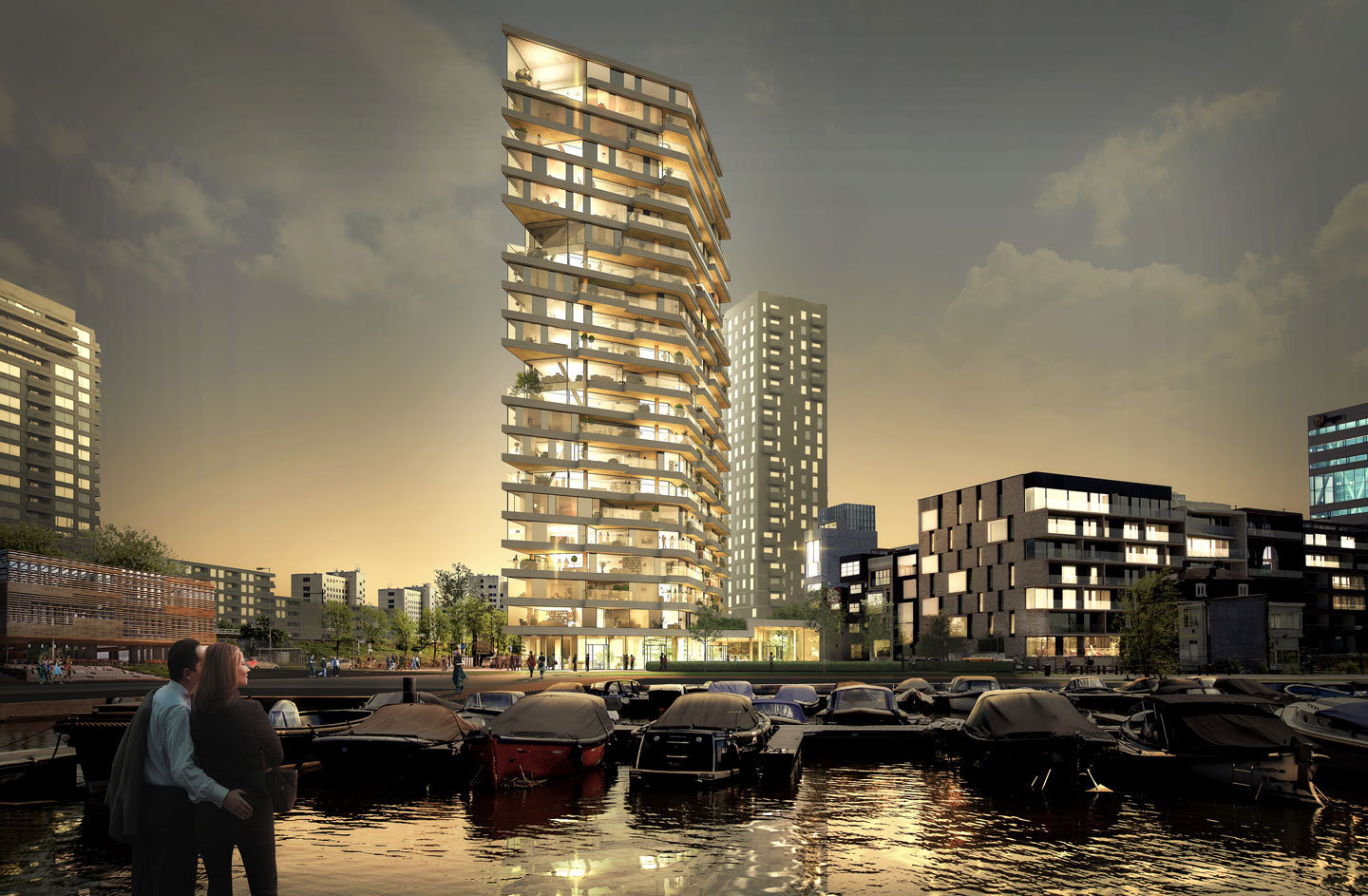
Across the globe, tall wood structures have begun transforming the world of skyscrapers and high-rise buildings, ushering in an important shift to an architectural practice that has traditionally been dominated by steel and concrete. Typically defined as wood-constructed buildings over 14 stories or 50 meters high, the past six years have seen over 44 tall wood buildings built or underway around the world. Notable examples include Michael Green Architecture and DLR Group’s T3 and Team V Architectuur’s upcoming 73 meter residential tower HAUT.
These new constructions have been motivated in part by a series of government and international policies seeking to promote taller wood design. In 2017, the Canadian government unveiled the Green Construction Through Wood (GCWood) Program, which provides funding for wood-intensive projects or those using innovative wood products and systems. Similarly, the International Code Council approved 14 changes to the International Building Code earlier this year, increasing the permitted height of mass timber construction to 270 feet (80 meters). These changes have or are hoped to have served as catalysts for increasing innovation in the field.
Clearly, there has been a driven and concerted effort to design taller wood high-rises. But what exactly are the benefits of tall wood buildings as compared to traditional steel and concrete construction?
The primary benefit of wood construction over other materials is sustainability. Recently, the prototypical steel high-rise has been criticized for its negative environmental impact, with Mayor de Blasio of New York City announcing in April that steel and glass buildings “have no place in our city or on our Earth anymore.” Such claims are founded on research showing that steel’s embodied energy and greenhouse gas emissions rate poorly: only one square meter of floor space supported by a steel beam emits 40 kg of CO2 and requires 516 megajoules of energy. Concrete is not much better, clocking in at 27 kg of CO2 and 290 megajoules of energy. In contrast, a square meter of floor space supported by a wooden beam only emits 4 kg of CO2 and requires only 80 megajoules of energy. In other words, constructing that square meter of space with wood instead of steel would reduce carbon emissions to one-tenth of its original output. This conclusion is corroborated by another study, which found the life-cycle emissions of wood houses to be 74% lower than those of steel houses and 69% lower than those of concrete houses.
These benefits are augmented by the properties of wood itself as a natural material: not only is it a renewable resource grown naturally, but due to a process called carbon sequestration, the carbon trapped by the tree as it grew is stored within the timber for its useful life, which can be decades.
As a result of these differences, shifting new developments from steel and concrete construction toward taller wood could have significant impacts on the environment. Currently, yearly harvested wood only accounts for 20% of annual growth. Increasing this portion to 34% would avoid the 14-31% of global CO2 emissions created by steel and concrete and reduce global fossil fuel consumption by 12-19%.
Thus, accompanying the recent push toward taller wood design is a successfully convincing, if not urgent, motivation for this shift. Tall wood buildings have been proved to reduce greenhouse gas emissions, reduce fossil fuel consumption, and may even protect forests through eco-conscious harvesting.
Avots: archdaily